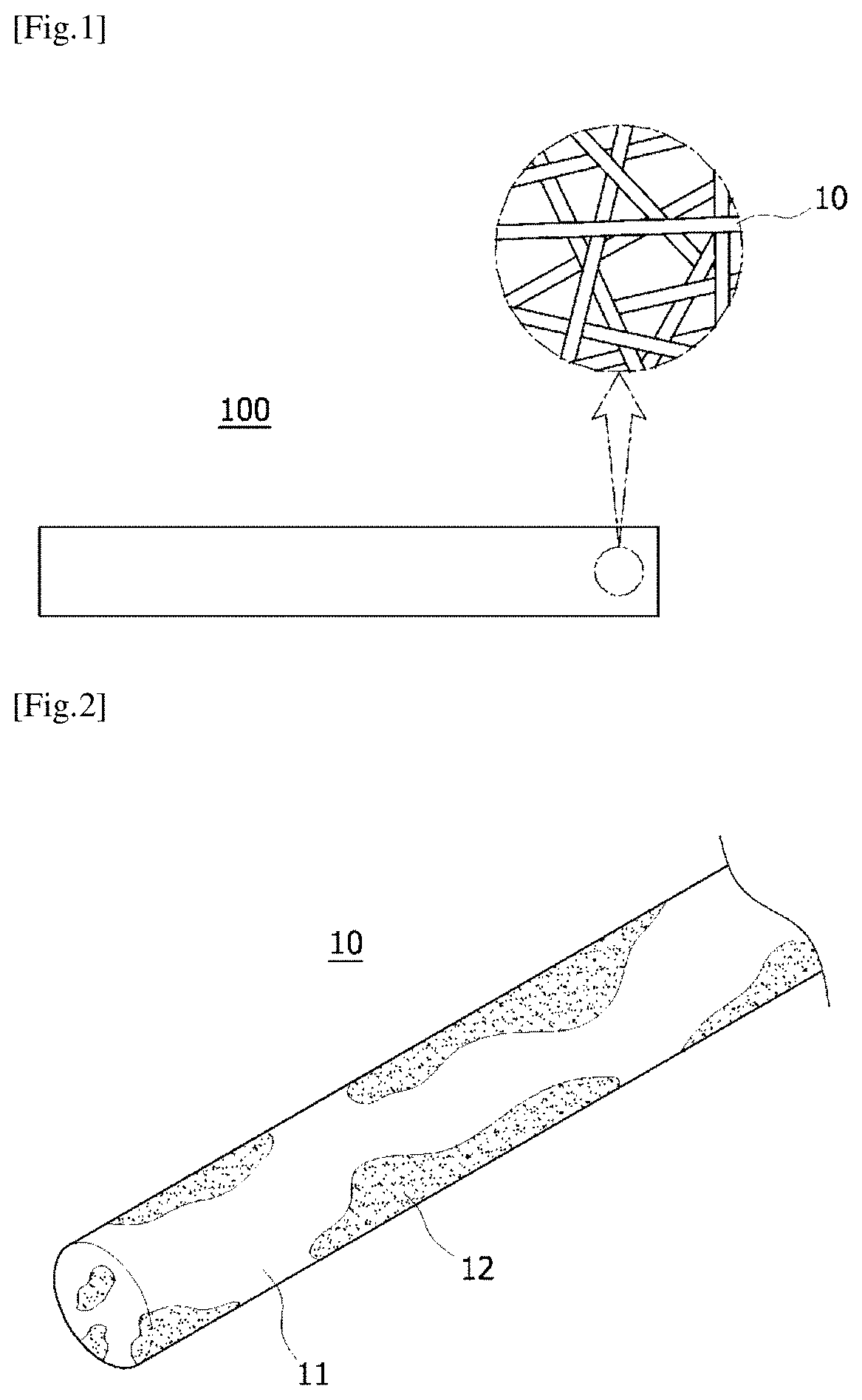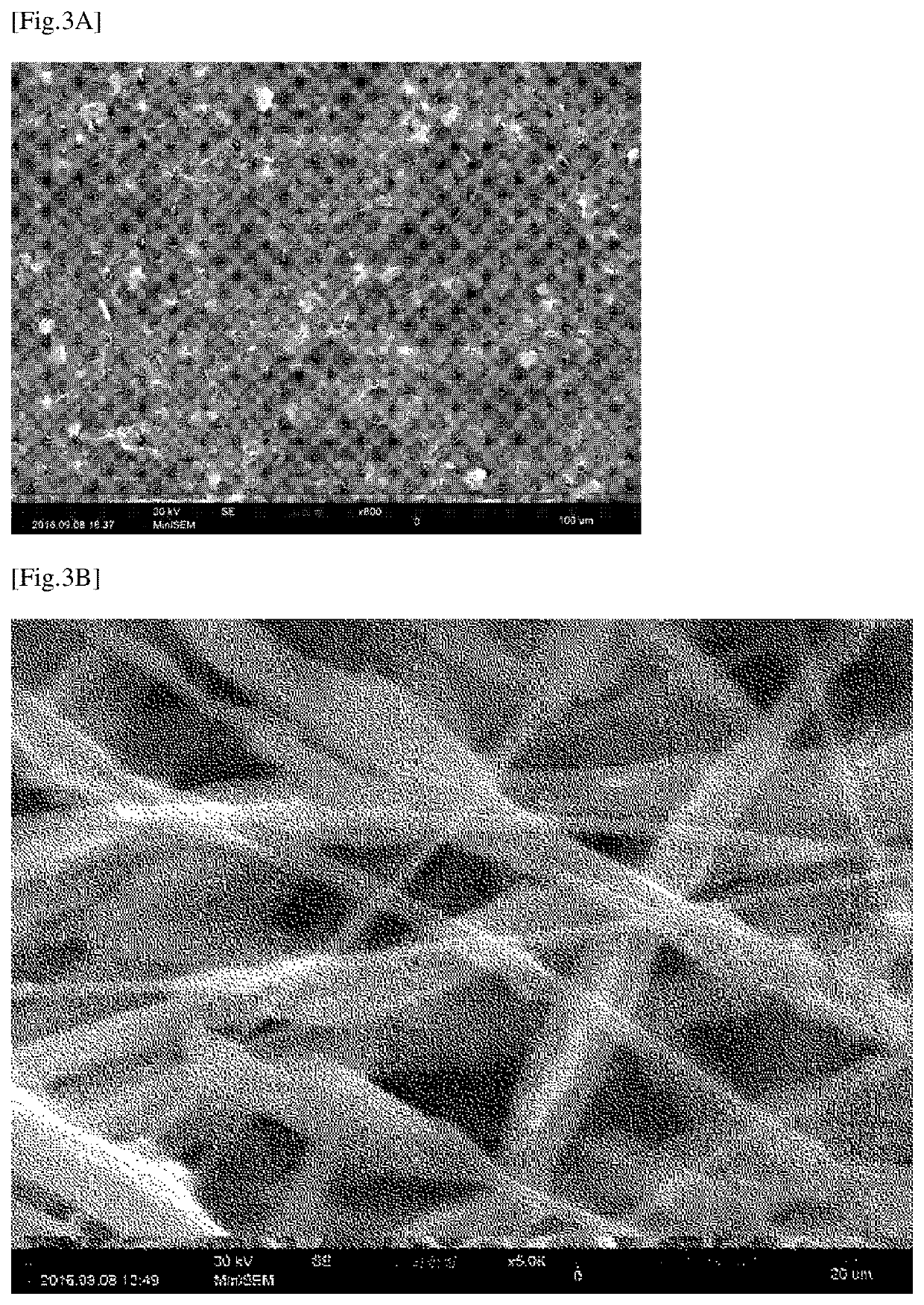Fiber web for gas sensor, method for manufacturing same, and gas sensor comprising same
a gas sensor and fiber web technology, applied in the field of fiber webs, can solve the problems of not being easily and generally applicable in the entire industrial field, using semiconductor oxide sensors or electrochemical sensors, etc., and achieve the effects of excellent spinning ability, improved sensitivity, and excellent mechanical strength
- Summary
- Abstract
- Description
- Claims
- Application Information
AI Technical Summary
Benefits of technology
Problems solved by technology
Method used
Image
Examples
example 1
[0081]First, a solution containing a fiber-forming material was prepared by dissolving, as the fiber-forming material, 32 g of PVDF (Kynar761 manufactured by Arkema) in 180 g of a DMAC solvent for six hours at 80° C. using a magnetic bar.
[0082]Next, a liquid dispersion containing a sensing material was prepared by mixing 60 g of DMAC as a dispersion medium and 96 g of lead acetate trihydrate (manufactured by Sigma-Aldrich, weight-average molecular weight: 379.33) and stirring the mixture using a magnetic bar for one hour at a temperature of 80° C. so that a liquid dispersion in which the lead acetate trihydrate is dispersed in a molten state in the dispersion medium was obtained. Afterward, the liquid dispersion was mixed with the solution containing a fiber-forming material, and the liquid mixture of the liquid dispersion and the solution containing a fiber-forming material was stirred using a magnetic bar for two hours at a temperature of 60° C.
[0083]The prepared liquid mixture wa...
example 2
[0084]A fiber web for a gas sensor as shown in Table 1 was prepared in the same manner as in Example 1 except that the above-described liquid mixture was not subjected to centrifugation and was used as a spinning solution as is.
[0085]The obtained fiber web had a basis weight of 30 g / m2, an average nanofiber diameter of 250 nm, and a porosity of 65%, and some of the nanofibers included a portion having a diameter of greater than 1.5 times the average nanofiber diameter.
example 3
[0086]A fiber web for a gas sensor as shown in Table 1 was prepared in the same manner as in Example 1 except that a spinning solution was prepared by mixing lead acetate trihydrate pulverized by dry ball-milling, instead of the above-described liquid dispersion, with the above-described solution containing a fiber-forming material in such an amount that the same content ratio as in the spinning solution of Example 1 was attained, and then stirring the mixture using a magnetic bar for two hours at 25° C.
[0087]The obtained fiber web had a basis weight of 20 g / m2, an average nanofiber diameter of 400 nm, a porosity of 43%, and some of the nanofibers included a portion having a diameter of greater than 1.5 times the average nanofiber diameter.
PUM
| Property | Measurement | Unit |
|---|---|---|
| thickness | aaaaa | aaaaa |
| thickness | aaaaa | aaaaa |
| temperature | aaaaa | aaaaa |
Abstract
Description
Claims
Application Information
 Login to View More
Login to View More - R&D
- Intellectual Property
- Life Sciences
- Materials
- Tech Scout
- Unparalleled Data Quality
- Higher Quality Content
- 60% Fewer Hallucinations
Browse by: Latest US Patents, China's latest patents, Technical Efficacy Thesaurus, Application Domain, Technology Topic, Popular Technical Reports.
© 2025 PatSnap. All rights reserved.Legal|Privacy policy|Modern Slavery Act Transparency Statement|Sitemap|About US| Contact US: help@patsnap.com



